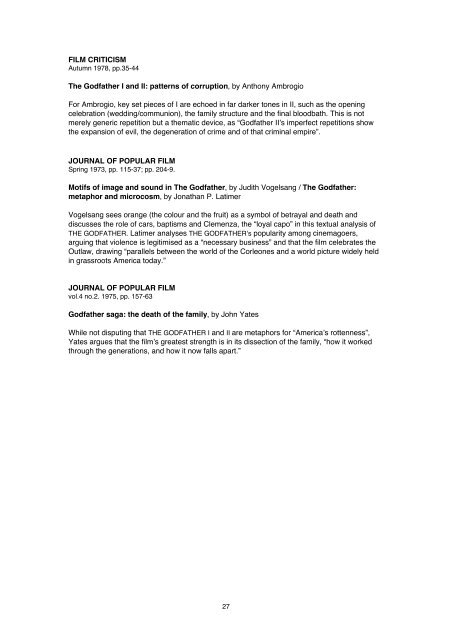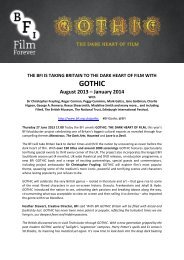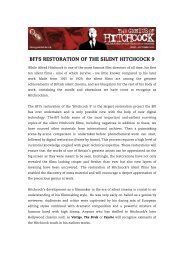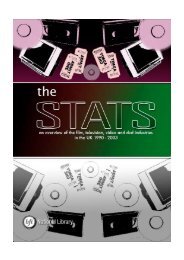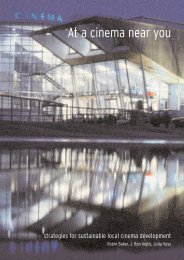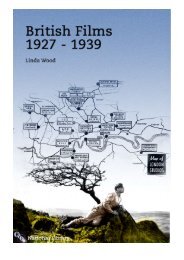16 + GUIDE - British Film Institute
16 + GUIDE - British Film Institute
16 + GUIDE - British Film Institute
Create successful ePaper yourself
Turn your PDF publications into a flip-book with our unique Google optimized e-Paper software.
FILM CRITICISM<br />
Autumn 1978, pp.35-44<br />
The Godfather I and II: patterns of corruption, by Anthony Ambrogio<br />
For Ambrogio, key set pieces of I are echoed in far darker tones in II, such as the opening<br />
celebration (wedding/communion), the family structure and the final bloodbath. This is not<br />
merely generic repetition but a thematic device, as “Godfather II’s imperfect repetitions show<br />
the expansion of evil, the degeneration of crime and of that criminal empire”.<br />
JOURNAL OF POPULAR FILM<br />
Spring 1973, pp. 115-37; pp. 204-9.<br />
Motifs of image and sound in The Godfather, by Judith Vogelsang / The Godfather:<br />
metaphor and microcosm, by Jonathan P. Latimer<br />
Vogelsang sees orange (the colour and the fruit) as a symbol of betrayal and death and<br />
discusses the role of cars, baptisms and Clemenza, the “loyal capo” in this textual analysis of<br />
THE GODFATHER. Latimer analyses THE GODFATHER’s popularity among cinemagoers,<br />
arguing that violence is legitimised as a “necessary business” and that the film celebrates the<br />
Outlaw, drawing “parallels between the world of the Corleones and a world picture widely held<br />
in grassroots America today.”<br />
JOURNAL OF POPULAR FILM<br />
vol.4 no.2. 1975, pp. 157-63<br />
Godfather saga: the death of the family, by John Yates<br />
While not disputing that THE GODFATHER I and II are metaphors for “America’s rottenness”,<br />
Yates argues that the film’s greatest strength is in its dissection of the family, “how it worked<br />
through the generations, and how it now falls apart.”<br />
27


